Everything you need to manage your organization with inclusive agile governance processes for value-creating development and contribution
Leave unclear strategies and uncertain outcomes behind you! With all your plans seamlessly integrated in the SaaS solution Cleerit, planning is easy, inclusive and efficient, and you can fast-track to higher goals. You and your team get the support you need to drive value creation and reach your goals, one step at a time, every day.
Cleerit’s inclusive management models seamlessly integrate strategy execution, ESG, goal management, activities, projects, budgets, forecasts, resources, risks, compliance and performance management with
- digital, agile, inclusive and seamlessly integrated work processes
- clear focus on stakeholder value and contribution
- continuous learning and improvement.
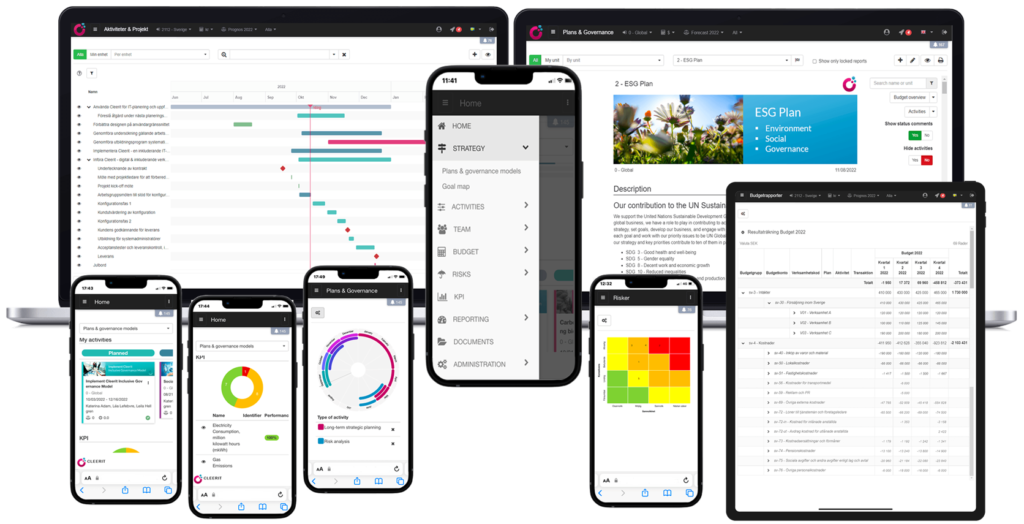
With Cleerit you get
- Real-time overview of your organization’s priorities, teams, activities, projects, resources & performance – and the decision support you need to reach your goals
- Decision-making and daily execution connected to strategic goals and priorities – aligning the big picture with day-to-day
- Best practice governance models and templates adapted to your organization’s specific situation and needs – bridging the gap between Strategy and Execution
Cleerit is the modern way to manage your organization when every day counts
- Define and distribute goals and assignments
- Transform goals into resource-based action plans
- Coordinate and manage activities & projects
- Streamline budget and forecasting processes
- Allocate resources, plan and monitor time spent
- Measure results, progress and KPI:s, manage deviations
- Monitor performance with continuous status updates and reports
- Come prepared to your meetings
- Simplify reporting and provide increased decision support
- Analyze and manage risks and compliance
- Encourage collaboration and share best practices
Welcome to contact us to find out more about how Cleerit helps you create reliable, inclusive and agile planning, management and control processes.
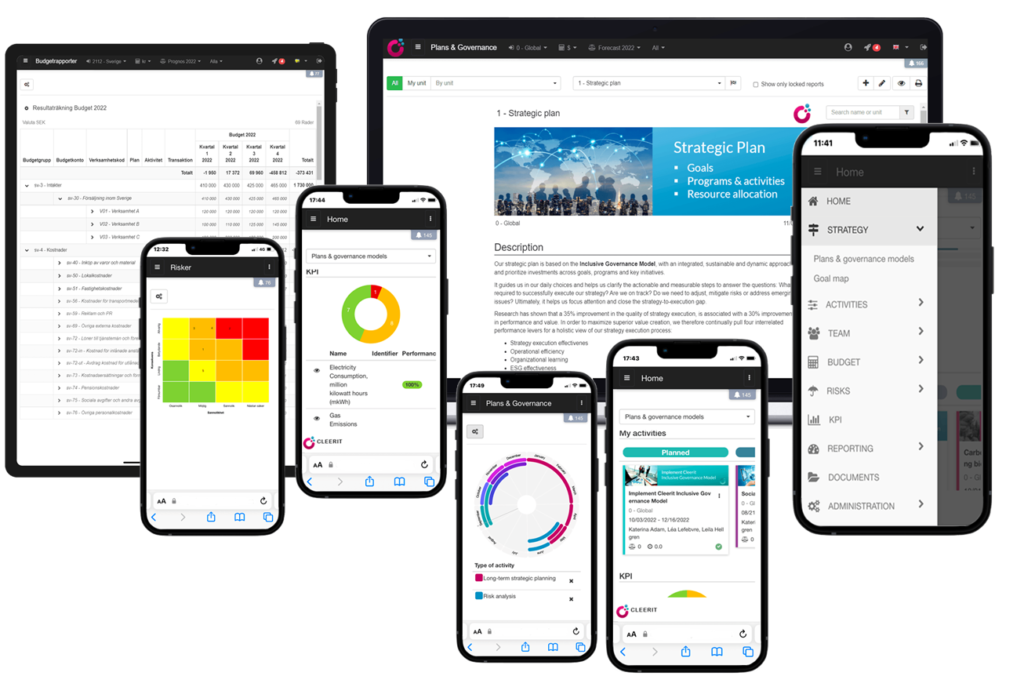


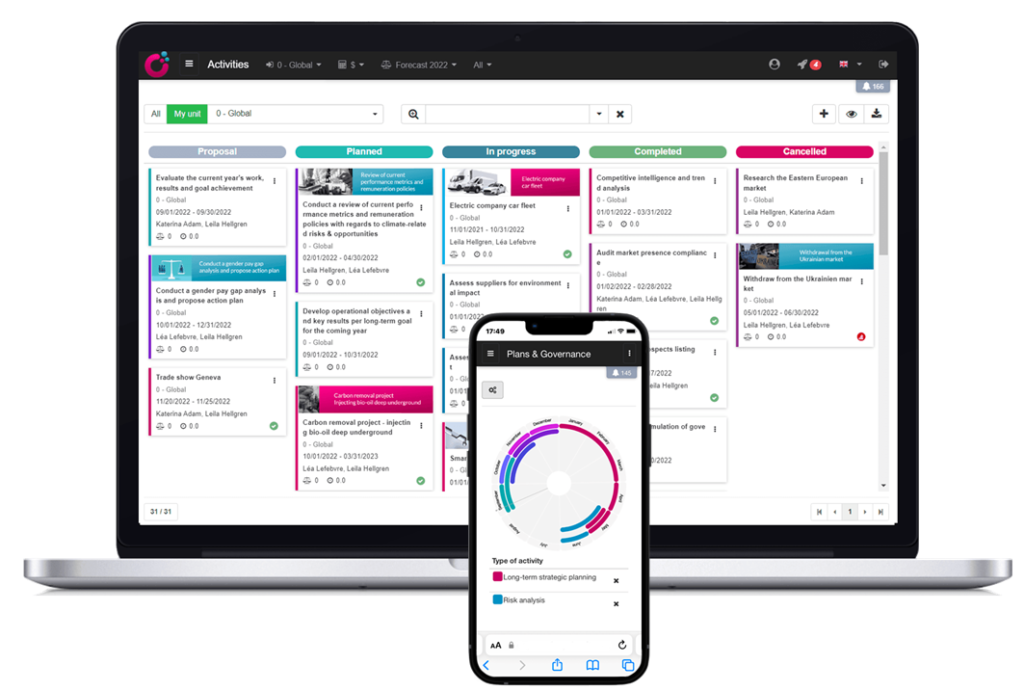
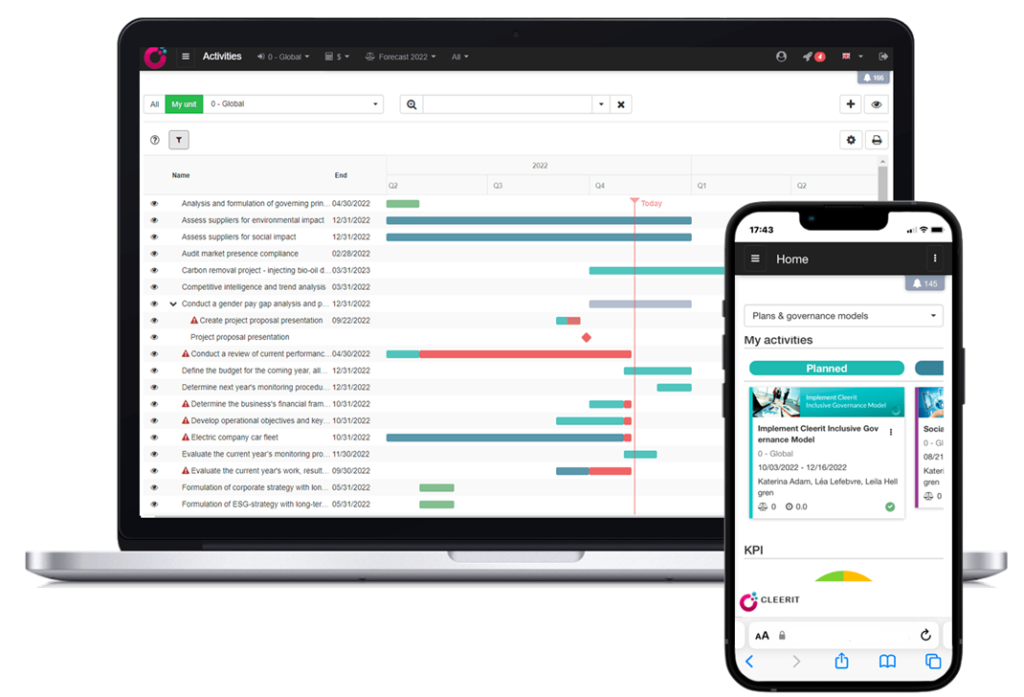


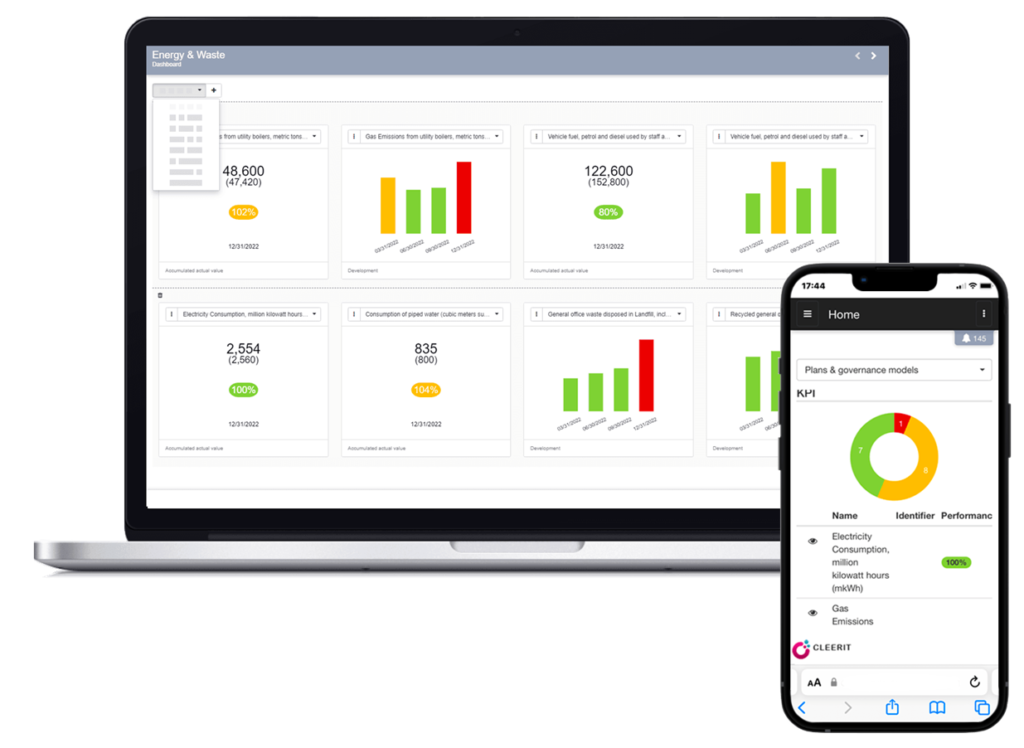

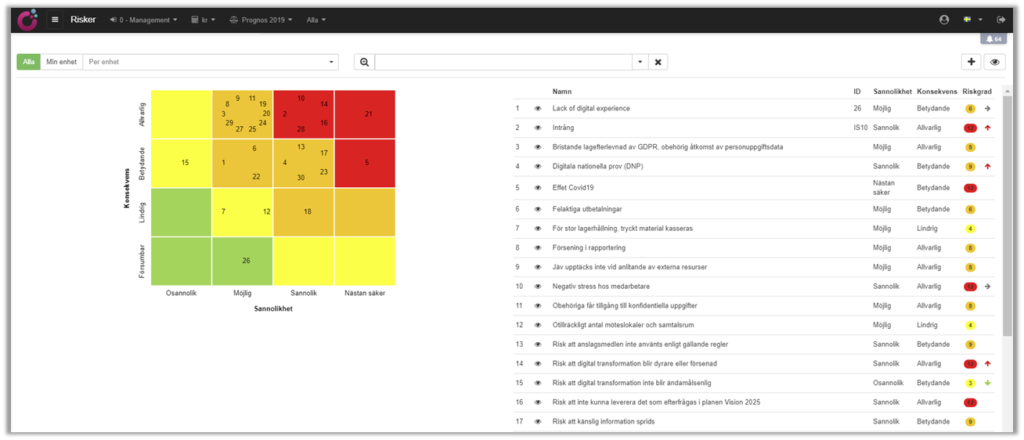

More about overview, clarity and control with Cleerit
A goal without a plan is just a wish.
Antoine de Saint-Exupéry 1900-1944 – French writer, journalist and pioneering aviator
When everyday counts on the way to your goals
Starting with the big picture, Cleerit takes you through your workday. Offering a solution to align day-to-day activities with strategy, allocate and monitor resources, manage risks and secure goal reaching. While continuously tracking progress and results along the way.
With Cleerit, you get a clear integrated work process with built-in goal management, which takes you all the way from strategy to execution to performance management in an agile learning process.
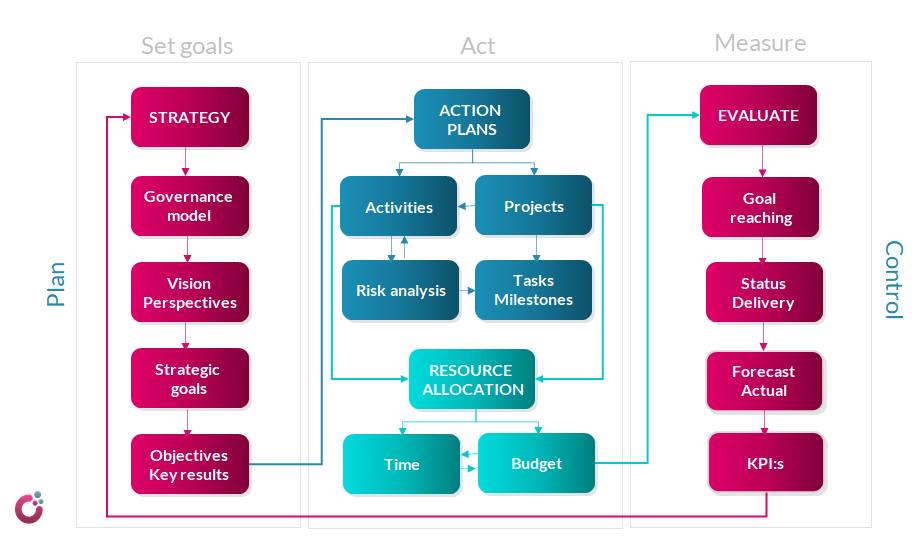
Cleerit helps you focus on key questions for efficient management
- What do we do? What should we do? What have we done?
- Are we doing the right thing? Are we doing things right?
- Is what we do in line with our mission, our objectives, our goals?
- How do we allocate resources (funds / time / skills)?
- Who does what? When where how?
- What are the expected / achieved results?
- How are we doing? Do we reach our goals? Adjustments?
- Risks?
A flexible solution to always do the right things in the right way
With Cleerit, you leverage the knowledge and experience available in the organization. Everyone can be involved and take responsibility for their goals and results, based on your specific situation and needs. This way you get the best out of your resources on your way to higher goals and maximized performance.
- Gain in overview, clarity and control to be able to prioritize and make the right decisions
- Allocate resources to where they contribute the most and adjust easily when needed
- Make sure everyone works towards the same goals and knows what to do, when and why
- Leverage knowledge and experience,learn, improve, collaborate and share best practices
- Make work visible and highlight urgent issues for an increased employee productivity
- Reduce time spent on reviews and evaluations, project overruns and risks, increase forecast reliability
When you need your strategic plans to thrive, be fully understood, backed up by measurable action and executed across all teams – and ensure they don’t just sit and collect dust in static presentations or spreadsheets.
When you want agile budget processes, reliable forecasts reflecting operational reality, flexible drill-down reports, and support for everyday resource allocation and performance management.
When you manage both standing activities and projects, and you need to plan, manage, collaborate and monitor initiatives, tasks and milestones in one integrated tool easy to use for all team members.
Then Cleerit is the solution for you.
Well-structured inclusive governance models increase value creation

We are with you all the way because it is also about people
We are inspired by your challenges and by contributing to more efficient processes and higher goals in your organization. Our experienced team assists you with both technical and business-specific experience and expertise.
With our support, the complex becomes simpler and you get started quickly and easily. Together, we make sure that you reach your goals, within the time frame and budget you set. We stay by your side and assist you with continuous knowledge transfer and support.
Your and your team’s success is our success!
More about strategic planning and general interest
Why plan when conditions are constantly changing?
In today’s fast-moving world, agility is a prerequisite for long-term success, but the reality is that we have to constantly plan for how to use the organization’s resources. Some plans are short-term, others extend into an imaginary future. Agile organizations face the challenge of taking advantage of decentralized initiatives (bottom-up) and ensuring that they are carried out within the organisation’s strategic priorities (top-down).
Managing with this built-in contradiction requires new processes and routines for planning and coordination. Henry Mintzberg defined strategic planning as “a formalized system for codifying, elaborating and operationalizing the strategies which organizations already have“.
But where agile processes and strategic planning meet, two fundamental questions are asked: when we put all these initiatives together, do they contribute to our organization’s strategic goals? And, what can we learn from these initiatives to make our strategic plan even more successful?
Setting ambitious goals, defining clear processes to achieve them, implementing these processes and continuously learning from them, is a prerequisite for success and should permeate the entire organization in the daily work at all levels. That is agile planning with Cleerit.
The importance of leveraging knowledge and experience
Today, the ability to generate data is virtually unlimited thanks to Big Data. And Big Data is being transformed into Business Intelligence. But that does not necessarily mean that we can create better plans for the future. As Henry Mintzberg writes in his book The rise and fall of strategic planning, soft data is also important:
While hard data may inform the intellect, it is largely soft data that generate wisdom. They may be difficult to ‘analyze’, but they are indispensable for synthesis — the key to strategy making.
Today, more than ever, knowledge and experience are the most important resources of the learning organization. Or, as Lawrence ”Larry” Bossidy – previously chairman of the board at General Electric and CEO at AlliedSignal (later Honeywell) and author of the book Execution: the Discipline of Getting Things Done, said:
At the end of the day, you bet on people, not on strategies.
With Cleerit, experience and knowledge are transformed into Soft Data that can be shared. It enables an optimized use of the organization’s resources and reduces waste of time and money.
We think before we act, and our actions help us to think
Traditionally, the development of the strategic plan is thought of as a sequential process, which begins with an initial analysis that is elaborated and formalized to culminate in possible action. But strategy design as a learning process can also take the opposite direction. We think before we act, to feel safe, but our actions also make us think. We try it out, experiment with new initiatives, and these experiments are gradually shaped into viable patterns that become strategies.
A successful strategy design takes place every day, and therefore strategic planning is an ongoing and iterative learning process. Much like day-to-day work in Cleerit.
Public managers can only to a limited degree let performance indicators drive decisions
Management in a public sector organization is fundamentally different from management in a private company. While private managers are mainly concerned about the bottom line of making sustainable profits, public managers are confronted with a top line of regulation, political interference and budget constraints.
As a result, public managers can only to a limited degree let performance indicators drive the decisions on how to steer & control their operations. Nevertheless, research has proven that there are many cases where steering & control improved thanks to performance management initiatives.
With Cleerit, organizations can manage performance information for three reasons: learning, steering & control, and accountability.
Performance management is a key factor in public sector reforms
Performance management is a key factor in public sector reforms in many OECD countries. The choice of a performance management strategy is generally considered to be a positive element in a modernization process.
In countries that have implicitly or explicitly evaluated the performance management reforms, it is said that efficiency, cost awareness and effectiveness have improved.
Enhanced clarity about responsibilities of the political, the ministerial and agency levels, and the related transparency about accountability are also considered to be an advantage.
Many cases show that giving internal emphasis to information systems such as through internal consultation, self-audits, and involvement of stakeholders, does result in better performance information.
Self-evaluation also seems to be another key element which will enhance knowledge, ownership and the practice of performance management itself.
However, audits and reviews carried out by OECD showed that in many Member countries
- financial targets may be given higher priority than, for example, service quality;
- trade-offs between quality and efficiency may be unclear;
- general targets may not always have clear indicators;
- links between inputs-activities-outputs-outcomes-targets are not systematic.
It is also important to bear in mind that performance measurement is one source of information amongst many. The non-use of formal knowledge such as performance information does not imply that decisions are not informed.
More than three decades ago, Mintzberg (1975) observed that many managerial tasks involve judgement rather than formal analysis. Managers therefore prefer rapid, informal and speculative information to entirely accurate information. Current leadership studies do not seem to suggest a more analytical profile for the contemporary manager.
Nevertheless, since pure rational decision-making is preferred over satisficing search-behavior, using performance measurement may be seen as a step towards more rationality. Although measurement always deals with past performance, it may to some degree reduce uncertainty over future performance.
With Cleerit knowledge, experience, data and evidence provide solid grounds for rational and rapid decision-making. Links between inputs-activities-outputs-outcomes-targets are clarified and communicated to the entire organization, and all targets can be monitored with clear quantitative and qualitative indicators.
Performance in the public sector can be defined as the fulfilment of the general interest
Performance refers to the productive organization, that is, an organization that has the capacity to perform and convert this capacity into results – outputs and outcomes.
There is substantial literature on high-performing public sector organizations and governments that roughly equates performance with superior capacity of the performing institutions.
Several studies have also attempted to clarify the concept of public value. Public value in the public and non-profit sector is the analogue of shareholder and user value in the private sector. Public value refers to the value created by government through services, laws, regulation and other actions.
In analytical terms, values are the frame of reference for the assessment of performance in the public sector. Values and performance thus ask different questions about the same issue.
A performance assessment will analyze to what extent public organizations and programs further influence the general interest. Are public services provided in an efficient and effective way? What are the impacts of a program on equity? Have sufficient measures been taken to guarantee the functioning of the public sector, even in the wake of disastrous events?
A value assessment will ask questions about the values that prevail, whether they are in conflict or whether they are complementary. In order to make this assessment of dominant values in the public sector, we may need to have a look at behavior aimed at the fulfilment of the general interest (performance).
Another big question for governments today is how to better connect with citizens. Some researchers speak of a crisis of citizen participation.
In response to this crisis, public officials have provided performance information to the public. The assumption is that more information will lead to better knowledge, higher trust and more involvement.
With Cleerit public value is made visible and can be shared with internal and external stakeholders, for increased accountability, transparency, understanding and trust.
Read more about performance management in the public sector:
In search of results – Performance management practices (OECD)
Performance management in the public sector (Wouter Van Dooren, Geert Bouckaert and John Halligan)
Read on to know more about the features Cleerit offers to succeed with strategic, operational and financial planning: